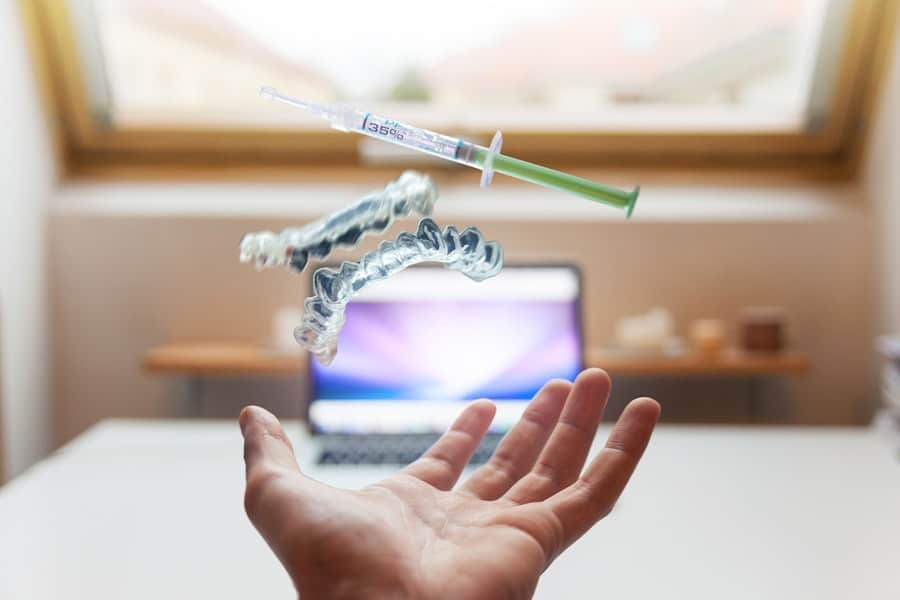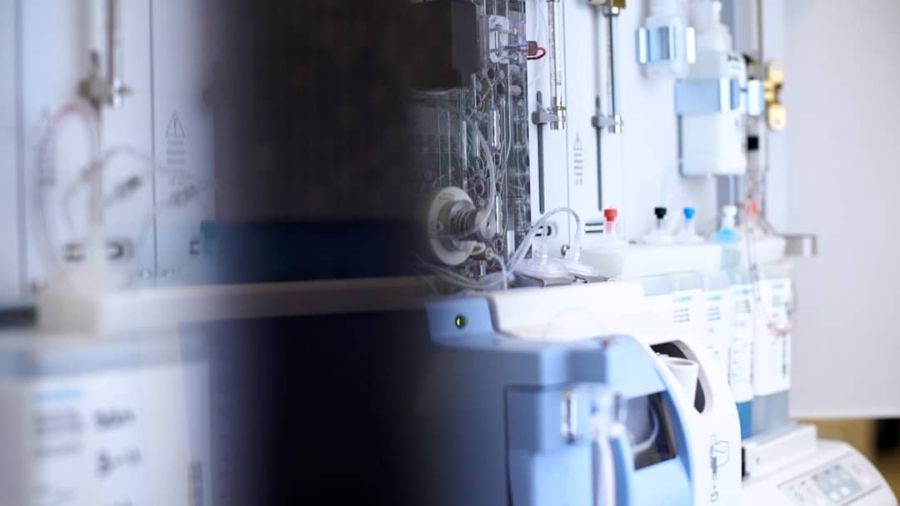The integration of wireless standards in healthcare device technology has revolutionized the way medical professionals monitor, diagnose, and treat patients. As healthcare systems increasingly adopt digital solutions, the need for seamless communication between devices has become paramount. Wireless standards facilitate this communication, allowing devices to share data efficiently and securely.
This integration not only enhances patient care but also streamlines workflows within healthcare facilities, ultimately leading to improved outcomes. Wireless standards encompass a variety of protocols and technologies that enable devices to connect and communicate without the need for physical cables. These standards are crucial in a healthcare environment where mobility and real-time data access are essential.
For instance, wearable devices that monitor vital signs can transmit data to healthcare providers in real-time, allowing for timely interventions. The evolution of wireless standards has made it possible for healthcare devices to operate in a more interconnected ecosystem, fostering collaboration among various stakeholders in the healthcare sector.
Key Takeaways
- Wireless standards play a crucial role in integrating healthcare devices, allowing for seamless communication and data exchange.
- Interoperability is essential in healthcare devices to ensure that different devices can work together effectively and share information.
- Common wireless standards for healthcare devices include Bluetooth, Wi-Fi, and Zigbee, each with its own advantages and considerations.
- Implementing wireless standards in healthcare devices comes with challenges such as security, compatibility, and reliability that need to be carefully addressed.
- Case studies demonstrate successful integration of healthcare devices using wireless standards, showcasing the potential benefits and best practices for implementation.
The Importance of Interoperability in Healthcare Devices
Enhancing Clinical Decision-Making and Patient Safety
When devices can seamlessly share information, it enhances clinical decision-making and improves patient safety. The lack of interoperability can lead to fragmented care, where critical patient information is siloed within different systems. For example, if a patient’s health data from a wearable device is not integrated with their EHR, a physician may miss vital information that could influence treatment decisions.
Reducing Administrative Burdens
Furthermore, interoperability can reduce administrative burdens by minimizing the need for manual data entry and reconciliation. By streamlining workflows and ensuring that all relevant data is available at the point of care, interoperability ultimately contributes to better patient outcomes and more efficient healthcare delivery.
Improving Patient Outcomes and Healthcare Efficiency
By ensuring seamless communication between devices and systems, interoperability plays a vital role in improving patient outcomes and healthcare efficiency. With access to complete and accurate patient information, healthcare providers can make informed decisions, reduce errors, and provide high-quality care.
Overview of Wireless Standards for Healthcare Devices

Several wireless standards have emerged as critical enablers of device integration in healthcare. Among these, Bluetooth Low Energy (BLE) has gained significant traction due to its low power consumption and ability to connect multiple devices simultaneously. BLE is particularly well-suited for wearable health monitors that require long battery life while continuously transmitting data.
Its widespread adoption in consumer health devices has paved the way for its integration into clinical settings. Another important standard is Wi-Fi, which provides high-speed internet connectivity and supports a wide range of applications in healthcare environments. Wi-Fi enables real-time data transmission from devices such as imaging equipment and remote monitoring systems to centralized databases or cloud platforms.
Additionally, Zigbee and Z-Wave are wireless standards designed for low-power applications, often used in home health monitoring systems. These protocols allow devices to communicate over short distances while maintaining energy efficiency, making them ideal for environments where battery life is a concern.
Challenges and Considerations in Implementing Wireless Standards
While the benefits of wireless standards in healthcare are clear, several challenges must be addressed during implementation. One significant concern is security. As healthcare devices become more interconnected, they also become more vulnerable to cyber threats.
Ensuring that data transmitted over wireless networks is encrypted and secure is paramount to protecting patient privacy and maintaining compliance with regulations such as HIPAA (Health Insurance Portability and Accountability Act). Healthcare organizations must invest in robust cybersecurity measures to safeguard sensitive information from unauthorized access. Another challenge lies in the diversity of devices and systems within healthcare settings.
Different manufacturers may use varying protocols or versions of wireless standards, leading to compatibility issues. This fragmentation can hinder the seamless integration of devices and create barriers to interoperability. To address this challenge, stakeholders must collaborate on establishing common standards and protocols that facilitate communication across different platforms.
Additionally, ongoing training for healthcare staff on the use of these technologies is essential to ensure that they can effectively leverage the capabilities of integrated systems.
Case Studies of Successful Healthcare Device Integration using Wireless Standards
Numerous case studies illustrate the successful integration of wireless standards in healthcare settings, showcasing their potential to enhance patient care and operational efficiency. One notable example is the implementation of remote patient monitoring systems in chronic disease management. A hospital network in California adopted a wireless monitoring solution that utilized BLE-enabled devices to track patients’ vital signs from home.
This system allowed healthcare providers to receive real-time data on patients’ conditions, enabling timely interventions and reducing hospital readmissions. In another instance, a large urban hospital integrated its imaging systems with a centralized EHR platform using Wi-Fi connectivity. This integration allowed radiologists to access imaging results directly from patients’ electronic records, streamlining the diagnostic process.
By eliminating the need for manual data entry and reducing delays in accessing critical information, the hospital improved its overall efficiency and enhanced patient satisfaction.
Future Trends and Developments in Wireless Standards for Healthcare Devices

Enhanced Telemedicine Capabilities
The implementation of 5G networks could enable healthcare professionals to remotely monitor patients and provide timely interventions, improving patient outcomes and reducing healthcare costs. Moreover, 5G technology could facilitate remote training and education for healthcare professionals, enhancing their skills and knowledge.
The Rise of the Internet of Medical Things (IoMT)
The IoMT refers to the network of connected medical devices that collect and transmit data over the internet. As more devices become interconnected, there will be a growing emphasis on developing standardized protocols that ensure seamless communication across diverse platforms.
Improved Patient Outcomes through Interoperability
The development of standardized protocols for IoMT devices will enable healthcare providers to access a wealth of patient data, facilitating more informed decision-making and improved patient care. Moreover, interoperability will enable healthcare providers to track patient data over time, identifying trends and patterns that can inform treatment strategies and improve patient outcomes.
Regulatory and Compliance Considerations for Wireless Standards in Healthcare
The integration of wireless standards in healthcare devices must adhere to various regulatory and compliance frameworks designed to protect patient safety and privacy. In the United States, the Food and Drug Administration (FDA) plays a crucial role in regulating medical devices, including those that utilize wireless technology. Manufacturers must demonstrate that their devices meet safety and efficacy standards before they can be marketed.
Moreover, compliance with data protection regulations such as HIPAA is essential when implementing wireless solutions in healthcare settings. Organizations must ensure that any data transmitted over wireless networks is encrypted and that appropriate safeguards are in place to protect patient information from breaches. Regular audits and assessments are necessary to ensure ongoing compliance with these regulations as technology evolves.
The Impact of Wireless Standards on Healthcare Device Integration
The impact of wireless standards on healthcare device integration cannot be overstated. By facilitating seamless communication between diverse medical devices, these standards enhance interoperability, improve patient care, and streamline workflows within healthcare organizations. As technology continues to advance, the importance of robust wireless standards will only grow, paving the way for innovative solutions that transform how healthcare is delivered.
The ongoing development of new wireless technologies will further enhance the capabilities of healthcare devices, enabling more sophisticated applications that improve patient outcomes. However, addressing challenges related to security, compatibility, and regulatory compliance will be essential for realizing the full potential of these advancements. As stakeholders collaborate to establish common standards and protocols, the future of healthcare device integration looks promising, with wireless standards at the forefront of this transformation.
In a related article discussing the importance of technology in healthcare, How to Choose the Best Tablet for Students highlights the significance of selecting the right device for educational purposes. Just as healthcare professionals rely on wireless standards for device integration, students also benefit from utilizing technology that meets their specific needs. By understanding the criteria for choosing the best tablet, students can enhance their learning experience and maximize the potential of digital tools in education.
FAQs
What are wireless standards in healthcare device integration?
Wireless standards in healthcare device integration refer to the set of protocols and specifications that enable different medical devices to communicate and exchange data wirelessly. These standards ensure interoperability and seamless integration of various healthcare devices, such as monitors, infusion pumps, and electronic health records systems.
Why are wireless standards important in healthcare device integration?
Wireless standards are important in healthcare device integration because they facilitate the seamless exchange of data between different medical devices and systems. This interoperability is crucial for improving patient care, streamlining workflows, and enabling healthcare providers to make informed decisions based on real-time data.
What are some common wireless standards used in healthcare device integration?
Some common wireless standards used in healthcare device integration include Bluetooth, Wi-Fi, Zigbee, and RFID. These standards enable medical devices to communicate and share data securely and efficiently, leading to improved patient outcomes and operational efficiency in healthcare settings.
How do wireless standards impact the adoption of healthcare technology?
Wireless standards play a significant role in the adoption of healthcare technology by ensuring that different medical devices and systems can seamlessly integrate and communicate with each other. This interoperability reduces the barriers to adopting new healthcare technology and enables healthcare providers to leverage the benefits of connected devices and data-driven decision-making.
What are the challenges associated with wireless standards in healthcare device integration?
Challenges associated with wireless standards in healthcare device integration include security concerns, interoperability issues, and the need for ongoing standardization efforts to keep pace with evolving technology. Addressing these challenges is crucial for ensuring the reliable and secure integration of healthcare devices and systems.

